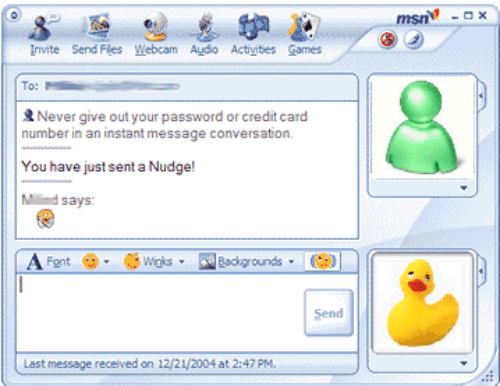If you had access to a family computer and a telephone line in the 2000’s, then we’re sure you had an experience with the magical world of instant messaging through MSN Messenger.
If you had messenger in your youth, prepare to feel old because MSN is 20 years old. Despite the fact that it ceased to exist in 2012, we can still imagine our screen moving with a nudge like it did back in the day.
Today’s youth won’t be able to understand how basic and rudimentary this app was as a social media platform. Now they have the TikTok, the newest app that focuses on video format. If there’s anything we can say, it’s that MSN Messenger’s existence was necessary in order for apps like WhatsApp, Facebook, Instagram, and TikTok to exist.
Before, young people would pass hours in front of their screens chatting with their friends, posting songs and pseudonyms on their names, connecting and disconnecting just to grab a special someone’s attention. They were different times and different digital interactions.
Nostalgia
According to the book “Social Media Myths,” by psychologist Ian MacRae, social media exists to satisfy a human’s basic need to interact with others. This is dangerous because when we feel bad, for example, when we are angry, it is easier for us to make other people angry as well since we are always available and connected. This is a challenge younger audiences face since they must have a greater impulse control.
If we think about MSN in relation to habits and norms that exist in today’s social media landscape, our digital identity would not make sense. It’s better to think about our communication within Messenger as something primitive, as well as a bit experimental. In today’s day and age, in order to communicate different aspects of our identity in a digital manner, we use different social media platforms.

We could also say that since MSN’s launch, communication though instant messaging has constantly been evolving. For example, when writing, it’s hard to gauge someone’s tone, posture, or facial expressions. Currently, emojis, gifs, pictures, and videos allows text formats to mimic in person communication.
A theory exists stating that we currently prefer communicating through text because it gives us the ability and time to construct an ideal persona since we can carefully control what information we share.
It’s possible to say that many of Facebook’s previous characteristics come from MSN Messenger, such as the poke feature and emojis, which if we remember correctly, these were first incorporated into digital instant messaging through MSN.
Another platform that exists thanks to Messenger is WhatsApp. Previously on MSN, we could make groups and add all of our friends to talk and share content with. The same dynamic exists today in 2019 with WhatsApp groups.
MSN Messenger is more than a trip down memory lane. This app showed us, for better or for worse, how social media would come to be in the future. They were the first steps towards showing how digital communication would manifest itself, specifically what habits future Facebook, Instagram and TikTok users would have. From the way we write, to the content we show the world, MSN opened the doors.
Thank you MSN Messenger, without you an entire generation would not have been able to share lots of viral videos with the rest of the world.
Source: www.theverge.com

